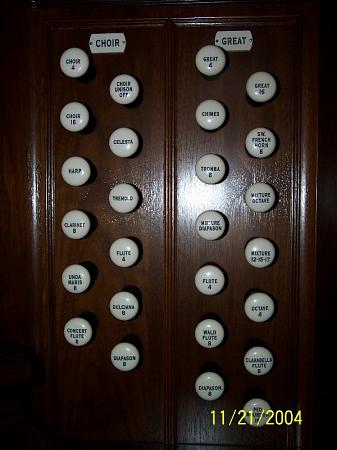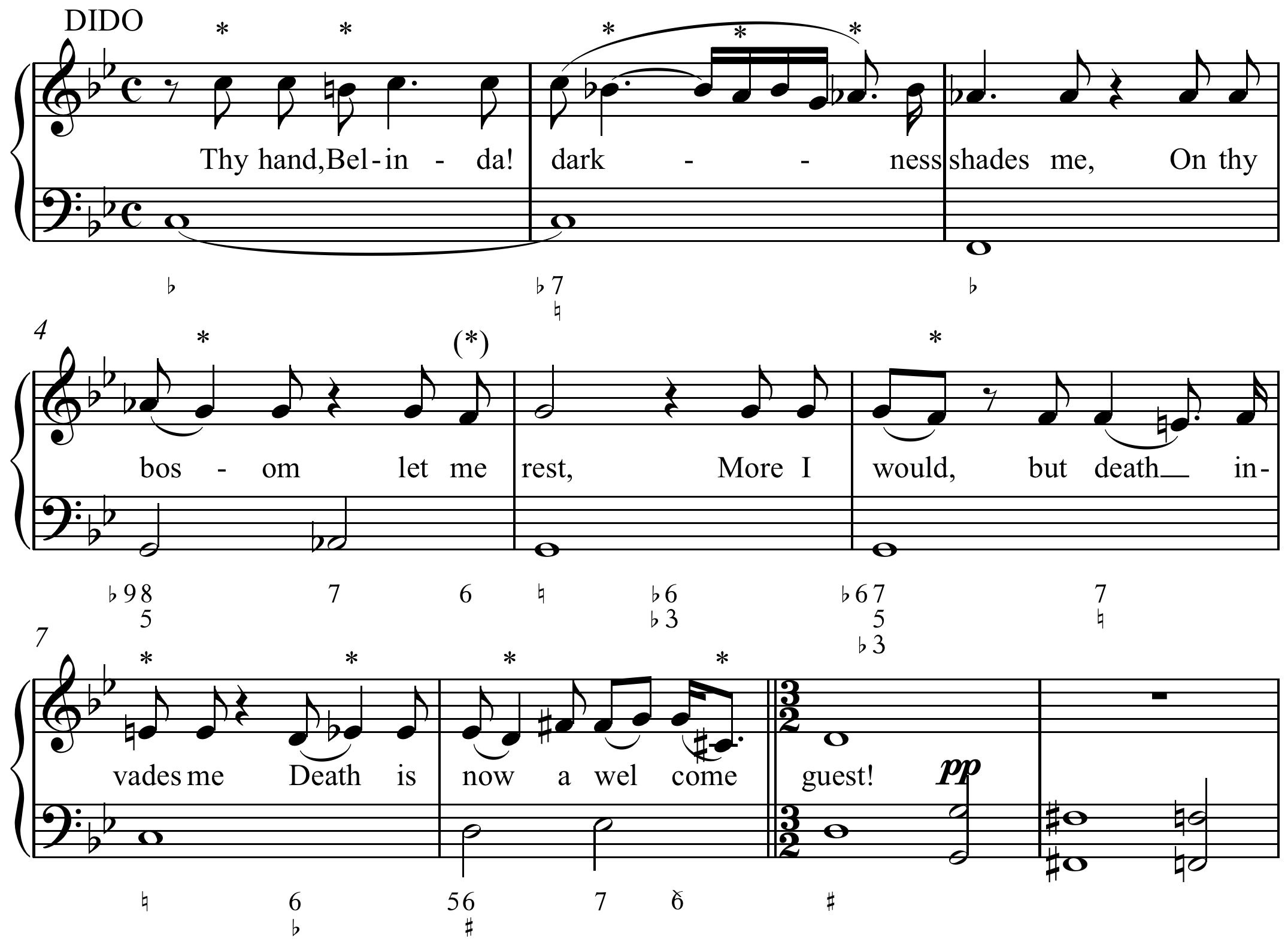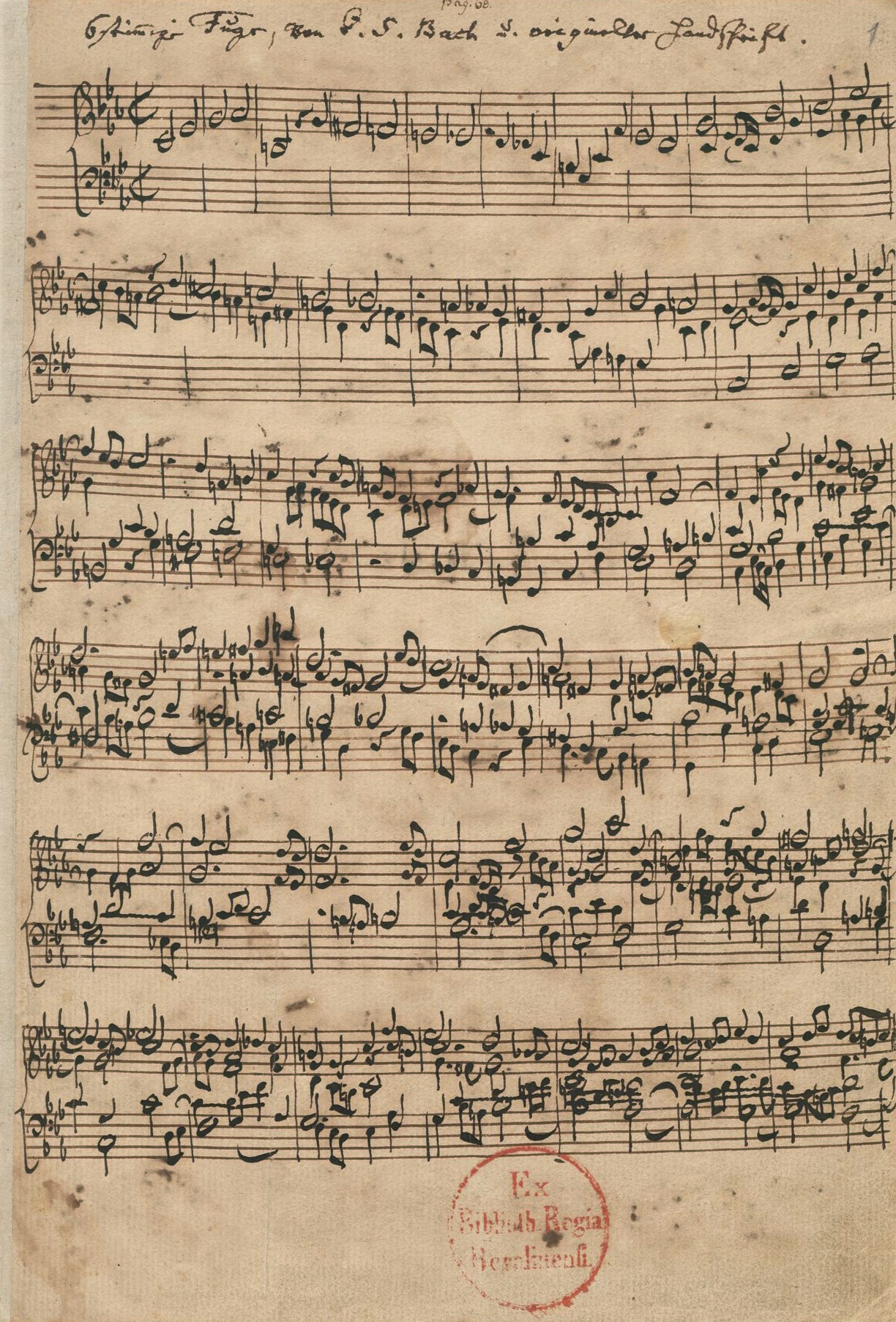|
Abbreviation (music)
Abbreviations in music are of two kinds, namely, abbreviations of terms related to musical expression, and the true musical abbreviations by the help of which certain passages, chords, etc., may be notated in a shortened form, to the greater convenience of both composer and performer. Abbreviations of the first kind are like most abbreviations in language; they consist for the most part of the initial letter or first syllable of the word employed—as for instance, or for the dynamic markings piano and forte, ''cresc.'' for crescendo, ''Ob.'' for oboe, ''Fag.'' for bassoon (). This article is about abbreviations used in music notation. Repetition of a single note or chord The continued repetition of a note or chord is expressed by a stroke or strokes across the stem, or above or below the note if it be a whole note or double whole note. The number of strokes denotes the subdivision of the written note into eighth notes, sixteenth notes, etc., unless the word tremolo or tre ... [...More Info...] [...Related Items...] OR: [Wikipedia] [Google] [Baidu] |
Glossary Of Musical Terminology
A variety of musical terms is encountered in Sheet music, printed scores, music reviews, and program notes. Most of the terms Italian musical terms used in English, are Italian, in accordance with the Italian origins of many European musical conventions. Sometimes, the special musical meanings of these phrases differ from the original or current Italian meanings. Most of the other terms are taken from French language, French and German language, German, indicated by ''Fr.'' and ''Ger.'', respectively. Unless specified, the terms are Italian or English. The list can never be complete: some terms are common, and others are used only occasionally, and new ones are coined from time to time. Some composers prefer terms from their own language rather than the standard terms listed here. 0–9 ; 1 : "sifflet" or one foot organ stop ; I : usually for Violin family, orchestral string instruments, used to indicate that the player should play the passage on the highest-pitched, thinnest ... [...More Info...] [...Related Items...] OR: [Wikipedia] [Google] [Baidu] |
Half Note
In music, a half note (American) or minim (British) is a Musical note, note played for half the duration of a whole note (or semibreve) and twice the duration of a quarter note (or crotchet). It was given its Latin name (''minima'', meaning "least or smallest") because it was the shortest of the five note values used in mensural notation, early medieval music notation. Half notes are notated with a hollow oval notehead like a whole note and straight note stem with no flag (music), flags like a quarter note (see Figure 1). The half rest (or minim rest) denotes a silence of the same duration. Half rest (music), rests are drawn as filled-in rectangles sitting on top of the middle line of the musical staff, although in polyphonic music the rest may need to be moved to a different line or even a ledger line. As with all notes with stems, half notes are drawn with upward stems on the right when they are below the middle line of the staff and downward stems on the left when they are on ... [...More Info...] [...Related Items...] OR: [Wikipedia] [Google] [Baidu] |
Roman Numeral Analysis
In music theory, Roman numeral analysis is a type of Harmony, harmonic analysis in which chord (music), chords are represented by Roman numerals, which encode the chord's Degree (music), degree and Function_(music), harmonic function within a given musical key. Specific notation conventions vary: some theorists use uppercase numerals (e.g. I, IV, V) to represent Major chord, major chords, and lowercase numerals (e.g. ii, iii, vi) to represent Minor chord, minor chords. Others use uppercase numerals for all chords regardless of their chord quality, quality.Roger Sessions (1951). ''Harmonic Practice''. New York: Harcourt, Brace. . p. 7. (As the II, III, and VI chords always are minor chords and the VII always diminished, a further distinguishment is thought unneeded, see table for Major Diatonic scale below) Roman numerals can be used to notate and analyze the harmonic progression of a composition independent of its specific Key (music), key. For example, the ubiquitous twelve-bar bl ... [...More Info...] [...Related Items...] OR: [Wikipedia] [Google] [Baidu] |
Figured Bass
Figured bass is musical notation in which numerals and symbols appear above or below (or next to) a bass note. The numerals and symbols (often accidental (music), accidentals) indicate interval (music), intervals, chord (music), chords, and non-chord tones that a musician playing piano, harpsichord, organ (music), organ, or lute (or other instruments capable of playing chords) should play in relation to the bass note. Figured bass is closely associated with #Basso continuo, basso continuo: a historically improvised accompaniment used in almost all genres of music in the Baroque music, Baroque period of Classical music ( 1600–1750), though rarely in modern music. Figured bass is also known as thoroughbass. Other systems for Chord (music)#Notation, denoting or representing chords include plain staff notation, used in classical music; Roman numeral analysis, Roman numerals, commonly used in harmonic analysis (music), harmonic analysis; chord letters, sometimes used in modern music ... [...More Info...] [...Related Items...] OR: [Wikipedia] [Google] [Baidu] |
Music Analysis
Musical analysis is the study of musical structure in either compositions or performances. According to music theorist Ian Bent, music analysis "is the means of answering directly the question 'How does it work?'". The method employed to answer this question, and indeed exactly what is meant by the question, differs from analyst to analyst, and according to the purpose of the analysis. According to Bent, "its emergence as an approach and method can be traced back to the 1750s. However it existed as a scholarly tool, albeit an auxiliary one, from the Middle Ages onwards." The principle of analysis has been variously criticized, especially by composers, such as Edgard Varèse's claim that, "to explain by means of nalysisis to decompose, to mutilate the spirit of a work". Analyses Some analysts, such as Donald Tovey (whose '' Essays in Musical Analysis'' are among the most accessible musical analyses) have presented their analyses in prose. Others, such as Hans Keller (who devi ... [...More Info...] [...Related Items...] OR: [Wikipedia] [Google] [Baidu] |
Scale Degree Numbers
Scale or scales may refer to: Mathematics * Scale (descriptive set theory), an object defined on a set of points * Scale (ratio), the ratio of a linear dimension of a model to the corresponding dimension of the original * Scale factor, a number which scales, or multiplies, some quantity * Long and short scales, how powers of ten are named and grouped in large numbers * Scale parameter, a description of the spread or dispersion of a probability distribution * Feature scaling, a method used to normalize the range of independent variables or features of data * Scale (analytical tool) Measurements * Scale (map), the ratio of the distance on a map to the corresponding actual distance * Scale (geography) * Weighing scale, an instrument used to measure mass * Scale (ratio), the ratio of the linear dimension of the model to the same dimension of the original * Spatial scale, a classification of sizes * Scale ruler, a tool for measuring lengths and transferring measurements at a fixed rat ... [...More Info...] [...Related Items...] OR: [Wikipedia] [Google] [Baidu] |
Manuscript
A manuscript (abbreviated MS for singular and MSS for plural) was, traditionally, any document written by hand or typewritten, as opposed to mechanically printed or reproduced in some indirect or automated way. More recently, the term has come to be understood to further include ''any'' written, typed, or word-processed copy of an author's work, as distinguished from the rendition as a printed version of the same. Before the arrival of prints, all documents and books were manuscripts. Manuscripts are not defined by their contents, which may combine writing with mathematical calculations, maps, music notation, explanatory figures, or illustrations. Terminology The word "manuscript" derives from the (from , hand and from , to write), and is first recorded in English in 1597. An earlier term in English that shares the meaning of a handwritten document is "hand-writ" (or "handwrit"), which is first attested around 1175 and is now rarely used. The study of the writing ( ... [...More Info...] [...Related Items...] OR: [Wikipedia] [Google] [Baidu] |
Fugue
In classical music, a fugue (, from Latin ''fuga'', meaning "flight" or "escape""Fugue, ''n''." ''The Concise Oxford English Dictionary'', eleventh edition, revised, ed. Catherine Soanes and Angus Stevenson (Oxford and New York: Oxford University Press, 2006). ) is a Counterpoint, contrapuntal, Polyphony, polyphonic Musical composition, compositional technique in two or more voice (music), voices, built on a Subject (music), subject (a musical theme) that is introduced at the beginning in imitation (music), imitation (repetition at different pitches), which recurs frequently throughout the course of the composition. It is not to be confused with a ''fuguing tune'', which is a style of song popularized by and mostly limited to Music history of the United States, early American (i.e. shape note or "Sacred Harp") music and West gallery music, West Gallery music. A fugue usually has three main sections: an exposition (music), exposition, a development (music), development, and a final ... [...More Info...] [...Related Items...] OR: [Wikipedia] [Google] [Baidu] |
A Due
A due in Italian or à deux in French is a musical direction meaning "for two". Most often seen in its abbreviated form ''a2'', the marking signifies that on a staff that normally carries parts for two players, both players are to play the single part in unison.Randel, Don Michael (ed.). ''Harvard Concise Dictionary of Music and Musicians.'' Cambridge, London: 1999. It is generally seen in scores and parts where two players or sections of the same instrument share a staff. The instruction ''a2'' indicates that both players or sections should play the notes indicated, while ''primo'' and ''secondo'' (often abbreviated to ''1.'' and ''2.'' or ''Io'' and ''IIo'') indicate that only a single player or section should play while the other remains tacet. Increasingly larger groups of players can also be indicated in a similar manner, for instance "a3" for three players ("a tre" in Italian, "à trois" in French), "a4" for four players ("a quattro" in Italian, "à quatre" in French), and ... [...More Info...] [...Related Items...] OR: [Wikipedia] [Google] [Baidu] |
Unison
Unison (stylised as UNISON) is a Great Britain, British trade union. Along with Unite the Union, Unite, Unison is one of the two largest trade unions in the United Kingdom, with over 1.2 million members who work predominantly in public services, including local government, education, health and outsourcing, outsourced services. The union was formed in 1993 when three public sector trade unions, the National Association of Local Government Officers, National and Local Government Officers Association (NALGO), the National Union of Public Employees (NUPE) and the Confederation of Health Service Employees (COHSE) merged. UNISON's current general secretary is Christina McAnea, who replaced Dave Prentis in 2021. Members and organisation Members of UNISON are typically from industries within the public sector and generally cover both full-time and part-time support and administrative staff. The majority of people joining UNISON are workers within sectors such as local government, e ... [...More Info...] [...Related Items...] OR: [Wikipedia] [Google] [Baidu] |
Orchestra
An orchestra (; ) is a large instrumental ensemble typical of classical music, which combines instruments from different families. There are typically four main sections of instruments: * String instruments, such as the violin, viola, cello, and double bass * Woodwinds, such as the flute, oboe, clarinet, bassoon, and occasional saxophone * Brass instruments, such as the French horn (commonly known as the "horn"), trumpet, trombone, cornet, and tuba, and sometimes euphonium * Percussion instruments, such as the timpani, snare drum, bass drum, cymbals, triangle, tambourine, tam-tam and mallet percussion instruments Other instruments such as the piano, harpsichord, pipe organ, and celesta may sometimes appear in a fifth keyboard section or may stand alone as soloist instruments, as may the concert harp and, for performances of some modern compositions, electronic instruments, and guitars. A full-size Western orchestra may sometimes be called a or phil ... [...More Info...] [...Related Items...] OR: [Wikipedia] [Google] [Baidu] |
Ledger Line
A ledger line or leger line is used in Western musical notation to notate pitches above or below the lines and spaces of the regular musical staff. A line slightly longer than the note head is drawn parallel to the staff, above or below, spaced at the same distance as the lines within the staff. The origin of the word is uncertain, but may have been borrowed attributively from the term for a horizontal timber in a scaffolding, lying parallel to the face of the building and supporting the putlogs. There is no basis to support the often-found claim that the word originates from the French ''léger'', meaning "light" or "slight" . The Oxford online dictionary describes the origin of the "leger" spelling as a "variant of ledger" that first appeared in the 19th century . Although ledger lines are found occasionally in manuscripts of plainchant and early polyphony, it was only in the early 16th century in keyboard music that their use became at all extensive . Even then, printers ... [...More Info...] [...Related Items...] OR: [Wikipedia] [Google] [Baidu] |






